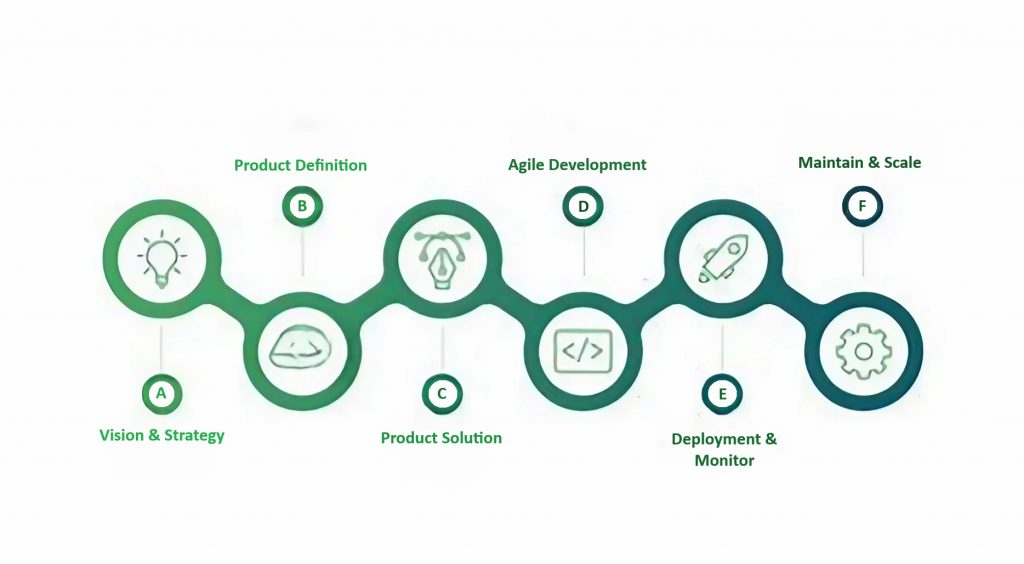A software product engineering operating model is a framework or structure that outlines how an organization creates, develops, and delivers software products. It defines the roles, responsibilities, processes, and tools necessary for successful product development. The model starts with ideation and continues all the way through to product delivery, maintenance, and support.
Importance of a Software Product Engineering Operating Model
An operating model is essential for an organization as it clarifies how things should be done. It ensures everyone in the software development process shares the same vision of what needs to be achieved. A well-defined operating model enables efficient collaboration, promotes consistency, and helps identify areas for improvement.
Key Components of a Software Product Engineering Operating Model
The main components of a software product engineering operating model include:
1. Roles and Responsibilities
Defining roles and responsibilities is crucial for successful product development. Each team member must have a clearly defined role and responsibilities to avoid confusion and ensure accountability. This includes roles such as project manager, product owner, software developer, quality assurance engineer, and more. Roles and responsibilities may include:
- Project manager: oversees the project to ensure it has completed on budget, on schedule, and meets quality standards.
- Product owner: responsible for defining the product vision, prioritizing features, and ensuring alignment with business goals.
- Software developer: responsible for writing code and implementing new features based on specifications provided by the product owner.
- Quality assurance engineer: responsible for testing the software to ensure it meets quality standards and identifying any bugs or issues to address.
2. Processes
Processes outline the steps for different phases of product development. Having well-defined processes helps teams work efficiently and deliver high-quality products. The process steps include:
- Vision & Strategy: This is the stage where product ideas are generated. It involves brainstorming and analyzing market trends to identify potential products.
- Product Definition: In this phase, product requirements are defined based on customer needs and market demand.
- Product Solution: The design process includes creating wireframes, mockups, and prototypes that outline how the final product will look and function.
- Agile Development: This is where the actual coding and testing of the software takes place, following the design specifications. Agile development is a popular approach to software development that emphasizes collaboration, flexibility, and iterative progress.
- Deployment & Monitor: After testing successfully, the software is deployed for customers or organizational use.
- Maintain & Scale: As products evolve and new features are added, maintenance includes fixing bugs, updating, and providing ongoing customer support.

3. Tools and Technologies
The right tools and technologies are crucial for efficient product development. These can include project management software, collaboration tools, version control systems, automated testing tools, and more. The operating model should specify the tools for each development stage. Some tools and technologies may include:
- Project management: JIRA, Asana, Trello
- Collaboration: Slack, Microsoft Teams, Google Drive
- Version control: Git, SVN
- Testing: Selenium, Appium, JUnit
4. Communication
Effective communication is key for successful product development. The operating model should outline communication channels and methods for team members, stakeholders, and customers. Communication channels may include:
- Regular team meetings
- Daily stand-ups
- Email updates
- Progress reports
- Customer feedback sessions
5. Performance Metrics
Measuring performance is important for identifying areas of improvement and ensuring project success. The operating model should define the metrics to track and how to measure them. Some key performance metrics may include:
- Time to market
- Quality metrics (bug count, customer satisfaction)
- Budget adherence
How a Software Product Engineering Operating Model Facilitates Product Delivery
A well-defined software product engineering operating model facilitates product delivery in several ways:
- Efficient Collaboration: An operating model enhances collaboration by clearly defining roles, responsibilities, processes, and communication channels among team members. This clarity helps team members understand their tasks, promotes seamless interaction, and reduces misunderstandings, thereby streamlining workflows and enhancing synergy within the group.
- Consistency: Maintaining a consistent approach to product development upholds high-quality standards, ensuring that all team members align with shared goals. This consistency allows the team to deliver products that meet or exceed expectations, fostering trust and reliability with clients and stakeholders.
- Identifying Improvement Areas: By monitoring performance metrics, an operating model highlights areas for improvement, fostering continuous process optimization. Regular analysis of data helps teams to identify bottlenecks and inefficiencies, enabling them to implement targeted solutions and refine their processes over time.
- Resource Allocation: A well-defined operating model ensures efficient resource allocation, preventing unnecessary delays and conflicts. Understanding resource needs and availability helps teams plan and execute projects better, ensuring optimal use of skills and tools.
In conclusion, a software product engineering operating model is crucial for successful product delivery. It provides a framework for efficient collaboration, consistency in processes, identification of improvement areas, and effective resource allocation. Organizations must invest time and effort into defining their operating models to ensure the timely delivery of high-quality software products. So, it is essential to have a well-defined operating model in place to ensure the success of software product engineering projects.
Click here for a post on helping stakeholders understand tech value.

